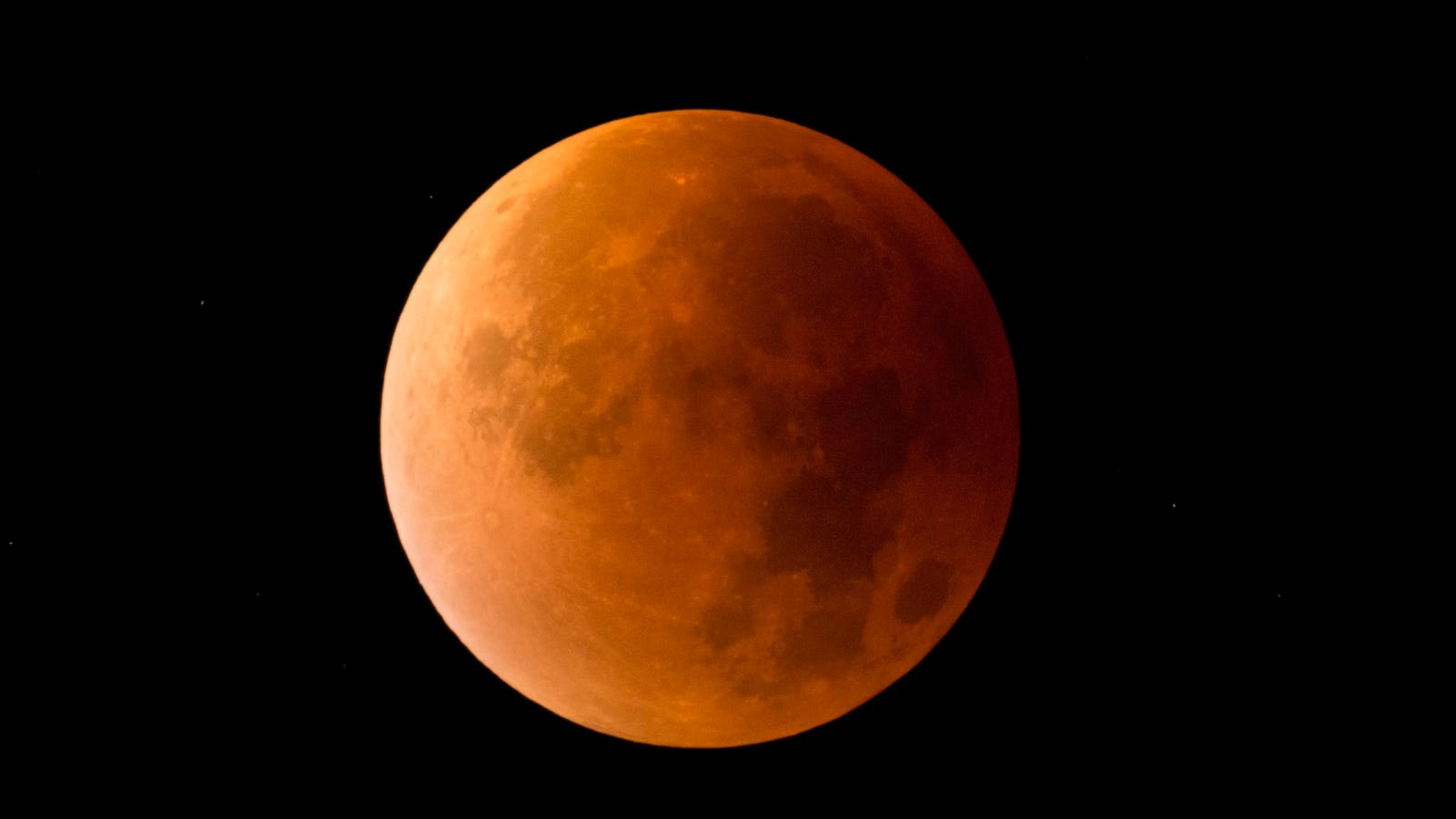Topline
The new moon on Saturday, Aug. 23, will pass unseen. Lost in the sun’s glare, it will get closest to our star — from Earth’s point of view — at precisely 2:06 a.m. EDT. Lost in the sun’s glare, its absence from the night sky signals the end of one orbit of the Earth by the moon, and the beginning of another, but this month it sets up not one, but three eclipses — one lunar and three solar — stretching through 2044.
Key Facts
Solar eclipses always occur at new moon (when the moon is between Earth and the sun) and lunar eclipses at full moon (when Earth is between the sun and the moon).
Two weeks after the new moon on Saturday, Aug. 23, there will be a full Corn Moon on Sunday, Sept. 7. Although from North America it will seem a regular full moon, skywatchers in Asia, Australia and parts of the Pacific will see a total lunar eclipse.
Two weeks later, on Monday, Sept. 22, a deep partial solar eclipse will be seen from New Zealand, Antarctica and the South Pacific. During that event, as much as 79% of the sun will be blocked by the moon.
Precisely one lunar year — 354 days, or 12 orbits of the moon around Earth — after the new moon on Saturday, Aug. 23, a total solar eclipse will occur. On Aug. 12, 2026, a path of totality will stretch from northern Russia through eastern Greenland, western Iceland and Northern Spain.
Exactly 19 years later, on the same date — Aug. 23 in 2044 — a new moon will occur once again, causing the next total solar eclipse to cross the contiguous U.S.
Why Saturday’s New Moon Is A ‘black Moon’
The new moon on Saturday, Aug. 23, will be a seasonal “black moon.” Just occasionally, four new moons occur within a single astronomical season. Between the June solstice and the September equinox, there are four new moons this year, something that only happens just less than every three years.
What Is An Eclipse Season?
When two eclipses happen close together, they’re part of what astronomers call an “eclipse season.” Every 173 days — just under six months — the moon’s orbit lines up with the ecliptic, the path the sun takes across the sky. This alignment lasts for about 31 to 37 days. During that short window, conditions are right for at least two eclipses to occur — typically one lunar and one solar. The cause is the tilt of the moon’s orbit. Angled by about five degrees compared to Earth’s orbit around the sun, the moon usually passes slightly above or below the ecliptic. However, twice a year, the geometry is perfect and the full moon passes through Earth’s shadow, creating a lunar eclipse, while the new moon crosses between Earth and the Sun, producing a solar eclipse. Or vice versa. Either way, there are two (and sometimes three) eclipses in succession.
Why This New Moon Is Linked To The Next American Eclipse
The next time there is a new moon on the date of Aug. 23 is in 2044, when there’s a total solar eclipse (caused by a new moon) visible from western Greenland, Canada and the U.S. (though only from Montana and North Dakota). The phases of the moon repeat on the same calendar dates every 19 years, according to the U.S. Naval Observatory, because of the Metonic cycle. It may seem random, but it’s a consequence of having a solar calendar and a lunar calendar that only sync over a long period (19 solar years is 235 lunar months (an orbit of the moon around Earth), so every 19 years, the moon returns to the same phase on roughly the same date.
